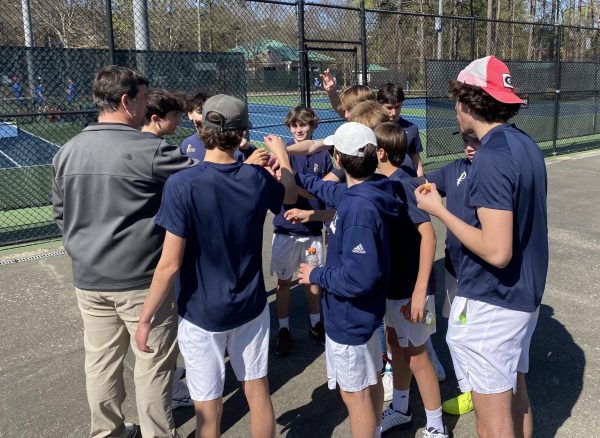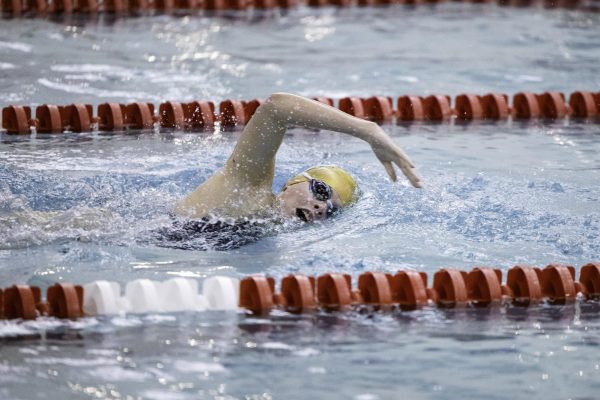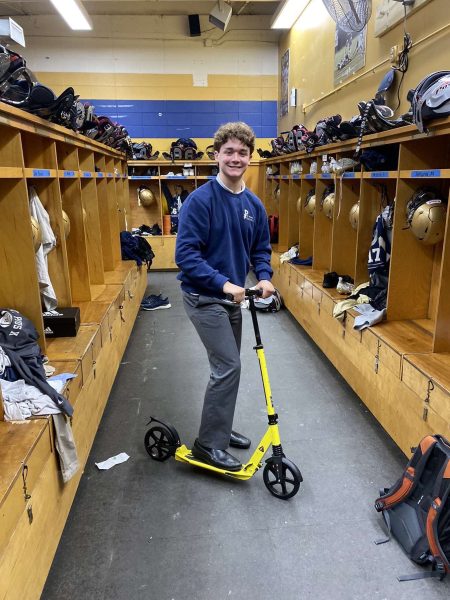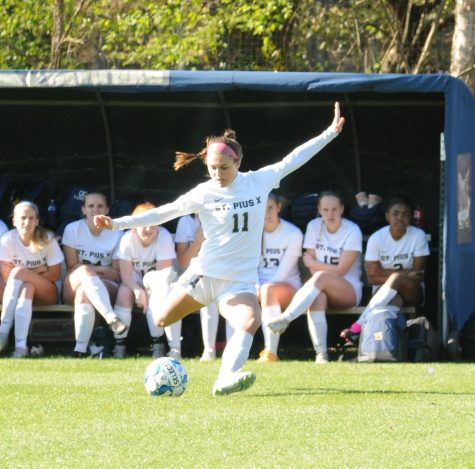Major MLB changes are coming in 2023
The MLB Competition Committee has voted on three major rule changes, which will be implemented in 2023
March 3, 2023
On January 27, the Major League Baseball Competition Committee voted in favor of three new rules that will change how baseball is played. Commissioner Rob Manfred announced that the committee voted for the implementation of the pitch clock, banning the shift, and bigger bases. Additionally, the baserunner placed on second base in extra innings in the regular season, dubbed by some as the ‘Manfred Man’, will become permanent in the league.
PITCH CLOCK
First, let’s discuss the pitch clock. The pitch clock has been in effect in the minor leagues since 2015 and is a 15-second timer that starts counting down as the pitcher toes the rubber. If there is a runner(s) on base, the pitcher has 20 seconds. If the pitcher does not begin the throwing motion by the time the timer ends, the batter will be awarded a ball. For the batter, he has to be in the box and ready to hit by the 8 second mark, or he will be given a strike.
This rule has been added in an attempt to shorten games and get rid of unnecessarily long pre-pitch rituals from both pitchers and batters.
The pitch clock will have many different effects. Minor league games have seen the average game length drop by 26 minutes since the addition of the pitch clock. Some of the positive effects it can have are an increase in offensive production, and shorter games with less lolly-gagging in between pitches. In addition to shorter games, the pitch clock may also lead to an increase in offensive production, which has been declining for the last few decades.
On the other side of the coin, there are many negative effects this can have. The most alarming one is a potential for more injuries to pitchers. Although this hasn’t been the case so far in the minor leagues, the sample size isn’t the largest. Manfred believes the clock will reduce injuries. Pitch clocks are now being introduced in college, so players will have over half their career with a pitch clock, and the biggest sample size we can have at this time is seven years. The long-term effects the clock can have on the pitcher is ultimately unknown.
Some critics argue that the clock goes against the idea of baseball, and that the beauty of baseball is that it is an untimed game. They claim pitchers and batters shouldn’t be rushed in a game that doesn’t have a time limit. Some older and more traditional fans, such as my father, have voiced their complaints about the clock, sharing sentiments of “let the players play their way.”
Players have been voicing their concerns as well, saying that it is harder to keep a runner on base. It makes pitch decisions harder with a limited time frame to come to a decision. Rockies reliever Daniel Bard said in an interview with The New York Times, “you’ll be getting a sign and you’ll say no to a fastball outside because you want it in, then you’ll say no to a slider, no to a changeup, and the clock is ticking down and you go, well, I better throw that pitch.”
The introduction of the pitch clock will be very interesting over the next decade to see how it changes the game. Manfred has made some questionable decisions in his past, and his job may depend on how the pitch clock turns out in the big leagues.
A tag along to this rule is that now, pitchers can only attempt a pick off twice in an at-bat. If he is not successful with either, the runner will be awarded the next base. This will cause an increase in stolen bases, making the game more thrilling.
BANNING OF THE SHIFT
Another change coming in 2023 is the removal of the defensive shift. Teams are no longer allowed to have three or more fielders on one side of second base. The league’s goal is to get rid of unconventional defensive formations and to increase offense. In 2015, the percentage of defensive plays in which the shift was used was only at 10%. In 2022, it was up to 34%.
The losers of this new rule are ground ball pitchers and the ground crew. They heavily benefitted from the shift, as many hard hit ground balls would be hit into the shift. Players can’t take advantage of a heavy shift with a soft ground ball on their opposite side. Also, fielders will have to dive further for ground balls that aren’t hit directly to them, causing the dirt to be getting torn up throughout the game.
The winners of this new rule are offense fanatics, Corey Seager, Matt Olson, and the defending World Champion Houston Astros. Seager, Olson, and two of the Astros strongest sluggers, Yordan Alvarez and Kyle Tucker, are all at the top of the list of players that hit hard ground balls into the shift between 2020-2022.
Many believe this will be a positive change. A shift with three fielders almost hugging first or third base looks ugly and makes outs too automatic. It forces hitters to play away from their strengths, having to force an opposite field hit or a fly ball.
LARGER BASES
MLB will also see differences in the sizes of the bases, switching from a size of 15 square inches to 18 square inches. This is being done in an attempt to lower injury numbers, giving players more room on the bag, away from the foot or glove of the fielder.
When players eventually get used to this, it will be forgotten as a rule change and become commonplace sooner than the other rules. The change won’t make a drastic decrease in caught stealing percentage, but will give runners a bit more of an incentive to steal, with the chance of injuries being lower.
This will take some time to get used to for the players who need to relearn when to begin their slide and how far to extend the arm or leg before making contact with the bag. Players have to be extra aware of where they are in relation to the bag with newer dimensions.
For example, in the first game of the season for the LSU Tigers, star third baseman Tommy White was diving back to first base in a pickoff attempt and jammed his shoulder, causing him to be out for a couple of weeks.
RUNNER PLACED AT 2ND IN EXTRA INNINGS
The last rule change is something we have seen in the MLB over the past few years, but will now be a permanent fixture in the game. In extra innings (in regular season games only), a runner will be placed on second base at the beginning of each half inning.
Many people see this as unnecessary and can change the view on relievers and their free agent markets. It can give a reliever a loss for a single in the 10th inning that might not have mattered without the Manfred Man on second base.
Many people that are upset with the change have echoed takes along the lines of ‘if you’re making a change in the game, why only have it in the regular season? If the playoffs are supposed to show who the best team is, and the regular season determines who gets in the playoffs, then why should the games have the chance to end in completely different ways?’
Through the few short seasons that it was tested in, the Manfred Man has had the impact that was planned, ending extra inning games relatively quickly.
In sports, evolution is key and we’re still seeing it happen in a century and a half old game. It will be interesting to see what comes from these changes, but changes of some sort were inevitable. If baseball can change and evolve, it can hopefully gain more respect, viewers and go back to being the true American Pastime.















